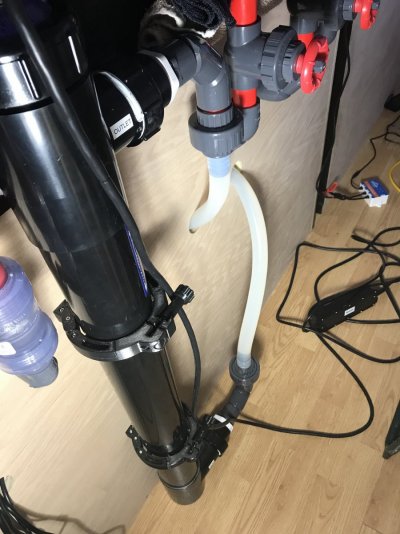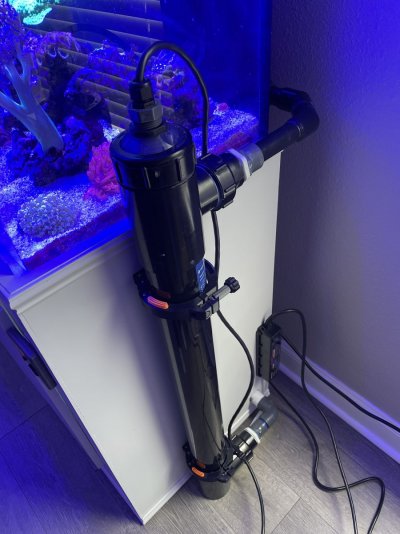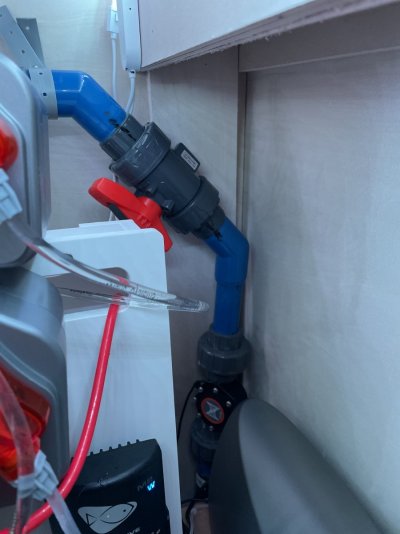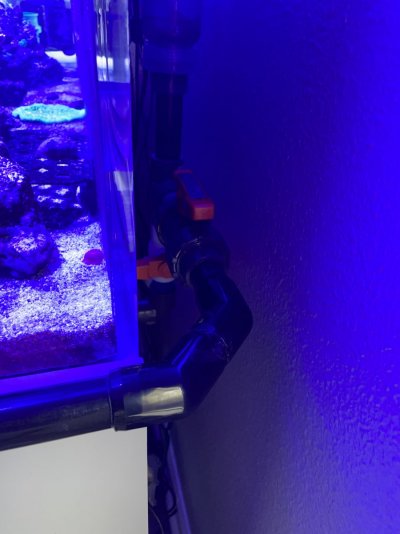Hey guys so I just recently bought a UV sterilizer to try and help with some unwanted dinos and help with fish parasites. After watching some BRS videos I have a few questions before I install. I currently have a 110g display and a 34g Trigger sump. My sump is practically full with gear and with the uv being so long I'm most likely going to be forced into installing it outside the cabinet. I currently have 2 return pumps installed (2 - Hydor Seltz D 1200 DC). My questions are the following.
1. If I decide to install it horizontal does the inlet and outlets must be facing up? It sounds like it does. Which would be very difficult in my setup since I was hoping to attach it to the ceiling of the cabinet.
2. If I install outside the the outside do you guys suggest plumbing it with PVC? I'd imagine it would be easier to move or manage using something a but more flexible but the clamps would make me very nervous.
3. My most pressing concern is if I use one of the 2 return pumps what will this do to my return systems output? Will I have to increase the "non-uv" side to make up for the difference going back to the display? Maybe I'm overthinking it but if I wanted to get more light exposure to get to fish parasites I would have to drastically slow the rate through the uv and in turn wouldn't that majorly chance the return output??
I enclosed some pictures sorry for the mess too just did a sump clean out and haven't had a chance to tidy up!
Thanks guys
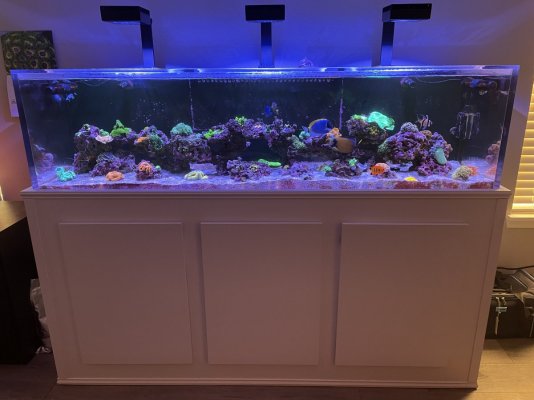
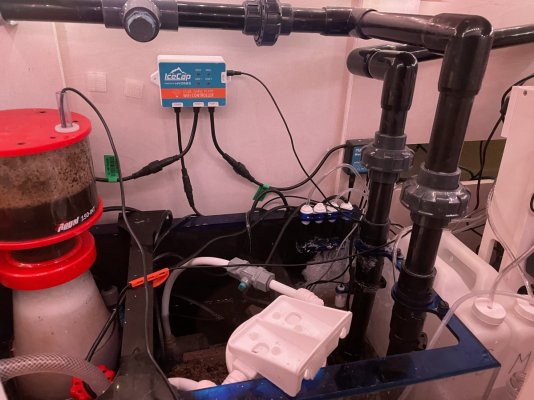
1. If I decide to install it horizontal does the inlet and outlets must be facing up? It sounds like it does. Which would be very difficult in my setup since I was hoping to attach it to the ceiling of the cabinet.
2. If I install outside the the outside do you guys suggest plumbing it with PVC? I'd imagine it would be easier to move or manage using something a but more flexible but the clamps would make me very nervous.
3. My most pressing concern is if I use one of the 2 return pumps what will this do to my return systems output? Will I have to increase the "non-uv" side to make up for the difference going back to the display? Maybe I'm overthinking it but if I wanted to get more light exposure to get to fish parasites I would have to drastically slow the rate through the uv and in turn wouldn't that majorly chance the return output??
I enclosed some pictures sorry for the mess too just did a sump clean out and haven't had a chance to tidy up!
Thanks guys





